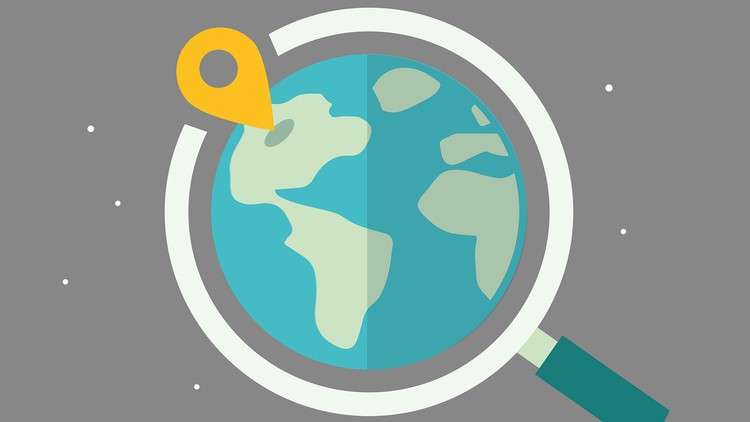
Data Science With Google Earth Engine (GEE) and Foursquare With Python Using Application Programming Interfaces (APIs)
What you will learn
Learn how to work with online Jupyter notebooks through
Gain robust grounding in working with geospatial APIs using Python
Apply data science methods on geospatial data
Deploy the Google Earth Engine (GEE) API within the Python ecosystem
Use GEE’s datasets for visualisation and geospatial analysis
Description
ENROLL IN MY LATEST COURSE ON HOW TO LEARN ALL ABOUT OBTAINING AND WORKING WITH WITH FREE GEOSPATIAL DATA OBTAINED VIA APPLICATION PROGRAMMING INTERFACES (APIs) USING DATA SCIENCE TECHNIQUES.
- Are you currently enrolled in any of my GIS and remote sensing related courses?
- Or perhaps you have prior experiences in GIS or tools like R and QGIS?
- You want to quickly analyse large amounts of geospatial data
- Implement machine learning models on remote sensing data
- You don’t want to spend 100s and 1000s of dollars on buying commercial software for imagery analysis?
- You want to have access to a multi-petabyte catalogue of satellite imagery and geospatial datasets with planetary-scale analysis capabilities
The next step for you is to gain proficiency in obtaining free geospatial datasets from a variety of sources, from Foursquare to Google Earth Engine via their Python-friendly APIs and analyse these using data science techniques
MY COURSE IS A HANDS-ON TRAINING WITH REAL REMOTE SENSING AND GIS DATA ANALYSIS WITH GOOGLE EARTH ENGINE- A planetary-scale platform for Earth science data & analysis; including implementing machine learning models on imagery data, powered by Google’s cloud infrastructure. !
My course provides a foundation to carry out PRACTICAL, real-life remote sensing and GIS analysis tasks in this powerful cloud-supported platform. By taking this course, you are taking an important step forward in your GIS journey to become an expert in geospatial analysis.
Why Should You Take My Course?
I have an MPhil (Geography and Environment) from the University of Oxford, UK. I also completed a PhD at Cambridge University (Tropical Ecology and Conservation).
I have several years of experience in analyzing real-life spatial geospatial data from different sources and producing publications for international peer-reviewed journals.
In this course, actual geospatial data obtained via Foursquare and GEE APIs will be used to give you hands-on experience of applying data science and machine learning techniques to these data to answer real-life questions such as identifying the best locations for a restaurant or changes in socio-economic dynamics of a territory.
This course will ensure you learn & put geospatial data analysis into practice today and increase your proficiency in using APIs for obtaining these data and deriving valuable insights from them.
This is a fairly comprehensive course, i.e. we will focus on learning the most essential and widely encountered data science techniques applied to geospatial data
In addition to all the above, you’ll have MY CONTINUOUS SUPPORT to make sure you get the most value out of your investment!
ENROLL NOW 🙂
Content